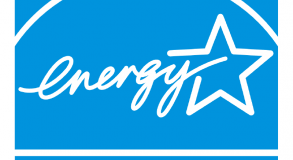
House Energy and Power Subcommittee
2125 Rayburn House Office Building
Washington, DC. 20515
Re: June 10, 2016 Subcommittee Hearing on ‘Home Appliance Energy Efficiency Standards under the Department of Energy—Stakeholder Perspectives’
Dear Chairman Whitfield and Ranking Minority Member Rush,
The Consumer Federation of America[1], Consumers Union[2], and the National Consumer Law Center[3] are writing to express support for the Department of Energy’s Appliance and Equipment Standards Program which sets minimum energy efficiency standards for household appliances and commercial products in homes, businesses, and industries. As organizations representing the consumer interest, we have long advocated for cost-effective energy efficiency standards that benefit consumers by lowering their monthly energy bills.
Efficiency gains from standards have translated into large dollar savings–in 2015 alone, consumers saved $63 billion on their utility bills on standards adopted since the program went into effect in 1987. Today, a typical household saves about $320 per year on their energy bills as a result of standards, and as people replace their appliances with newer models, they can expect to save nearly $460 annually by 2030. The cumulative operating cost savings from all standards in effect since 1987 will reach nearly $2 trillion.[4]
Standards have lowered the energy consumption of a wide variety of household appliances, such as refrigerators, water heaters, clothes washers, and air conditioners. While appliance prices sometimes increase initially to meet energy efficiency requirements, over time, technological innovation, economies of scale and competition reduce or eliminate these added first-costs. For example, between 1987 and 2010, the average energy use of refrigerators and clothes washers decreased by 50% and 75% respectively and the corresponding purchase price decreased by 35% and 45% over that same period, according to a 2013 report prepared by the American Council for an Energy Efficient Economy and the Appliance Standards Awareness Project.[5] So while in some cases the more efficient products may cost more at the time of sale, consumers save money over the life of the product, and are paid back for any higher initial product costs through lower monthly energy bills.
Moreover, the above-referenced report found that DOE often overestimates the cost increase associated with a proposed standard. Across nine rulemakings studied, DOE estimated an average increase in manufacturer’s selling price of $148 when, on average the actual change in price was a decrease in manufacturer’s selling price of $12.
Some have expressed concern that standards disproportionately impact low income consumers. To the contrary, low-income households especially benefit from higher efficiency standards because they are disproportionately renters, not homeowners. The property owner, not the tenant, makes the decision on which product, i.e. appliance, heating or cooling system, to buy and, in the absence of strong standards, landlords will likely opt to buy less expensive, lower efficiency replacements, and the tenants will bear the higher energy bills of the more inefficient product. And, it is important to bear in mind that low-income households pay proportionately more of their monthly budgets than the average household for energy costs.[6]
We appreciate the opportunity to offer our perspective on DOE’s Appliance and Equipment Standards Program—we believe, in addition to economic and environmental benefits for our country, the program provides significant pocketbook savings through cost-effective energy efficiency standards which over the long run lower consumers’ energy bills.
Respectfully submitted,
Shannon Baker-Branstetter
Policy Counsel, Energy and Environment
Consumers Union
Mel Hall-Crawford
Energy Projects Director
Consumer Federation of America
Charles Harak
Senior Attorney for Energy Issues
National Consumer Law Center
On behalf of its low income clients
[1] The Consumer Federation of America (CFA) is an association of more than 250 non-profit consumer groups that, since 1968, has sought to advance the consumer interest through research, education, and advocacy.
[2] Consumers Union (CU) is the policy and advocacy arm of Consumer Reports. Consumers Union works for clean and affordable energy, telecommunications reform, health reform, food and product safety, and financial reform. Founded in 1936, Consumer Reports has over 8 million subscribers to its magazine, website, and other publications.
[3] The National Consumer Law Center (NCLC) is a non‐profit organization with a broad mission of seeking economic justice in the marketplace for low‐income households. NCLC has a particular focus on making sure that low‐income consumers can obtain the essential amounts of energy they need, and that their homes and appliances are as efficient as reasonably possible
[4] Office of Energy Efficiency & Renewable Energy, U.S. Dep’t of Energy, Saving Energy and Money with Appliance and Equipment Standards in the United States (2009), available at http://energy.gov/sites/prod/files/2016/02/f29/Appliance%20Standards%20Fact%20Sheet%20-%202-17-2016.pdf
[5] http://www.standardsasap.org/sites/default/files/Better_Appliances_Report.pdf
[6] http://nlihc.org/article/low-income-african-american-and-renter-households-have-highest-energy-cost-burdens
